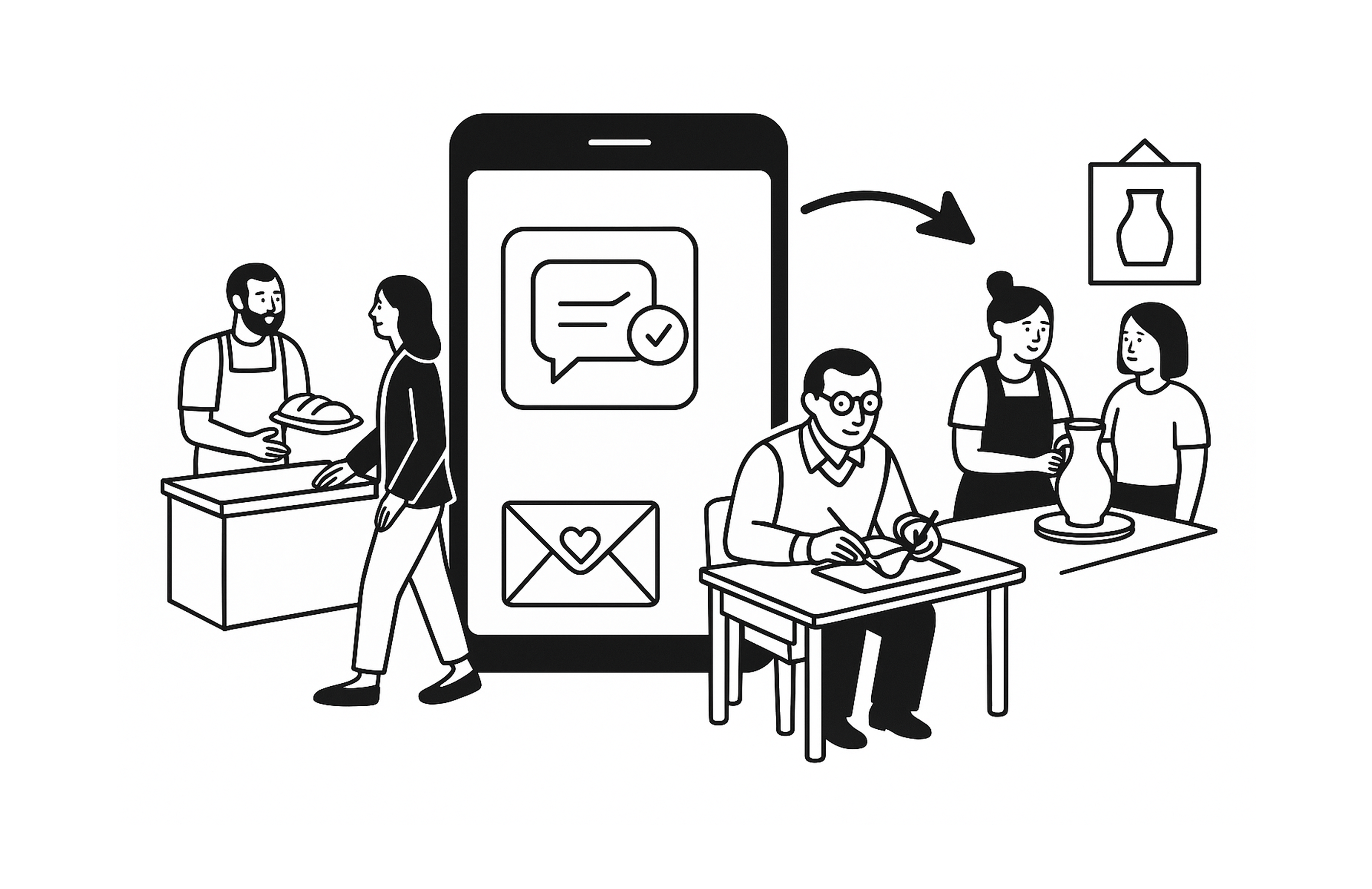
How Small Businesses Use Service Design Without Knowing It
Julia Vorobiova / Feb 20, 2025
There's a bakery in a quiet side street where the first croissant comes out at 7:42 a.m. every day. Not 7:30. Not 8. It started because the baker noticed a wave of commuters passing just before the 8 a.m. tram. They adjusted their prep schedule. No announcement, no branding. But by 7:40, there's a small queue.
That's service design, even if no one calls it that.
A dance studio used to email schedule changes to parents. Many missed them, some showed up to the wrong class. Then someone tried a WhatsApp list. It was informal, immediate, and it worked. The front desk stopped fielding last-minute complaints.
That's service design, too.
At a neighborhood tailor, a notebook started filling with wedding dates of clients who came in for alterations. A year later, those clients received handwritten anniversary cards. Nothing fancy, just a line or two and the shop's name. Customers came back. Not for the card. For the feeling.
Also service design.
Even a ceramics shop got in on it. Staff noticed customers asking about the making process more than the pieces themselves. So they pushed a table aside and opened a view into the back studio. Now you can watch hands shaping clay while you browse. No extra cost. No decor update. But the space feels different now. More alive.
That's service design, hidden in plain sight.
None of these businesses used sticky notes or service maps. They didn't attend workshops or hire strategists. But they listened. They noticed. And they made small changes that transformed the experience.
The Invisible Blueprint
How service design looks behind the scenes
If a service designer had been there, the steps might've been more deliberate, but not more complex. No software needed. Just structured curiosity.
In the ceramics shop, they might've started by observing how people moved, paused, asked questions. They'd sketch a rough journey: enter → explore → notice clay → ask questions → purchase. Then they'd prototype, maybe just a handwritten sign: "See the making in the back." Or set out a few half-finished pots to catch attention. If customers lingered longer or bought more, the test worked. If not, they'd try something else.
At the tailor's? Maybe only five customers got cards at first, a micro-pilot to see if anyone responded. It's still personal. Still meaningful. Just faster to learn from.
Even the WhatsApp shift at the dance studio could've begun with a quick one-question survey: How would you like to receive updates? A designer wouldn't assume the right answer; they'd ask, test, measure.
Service designers prototype like chefs test recipes: often, scrappily, and with real people in mind. They role-play greetings. Move furniture around. Walk through a space pretending to be a confused newcomer. They treat every part of the business as a living, flexible touchpoint. A moment that can be adjusted. Improved. Simplified. Or made to feel just a little more human.
Design Without Saying 'Design'
In these places, the product isn't the only thing people come for. They come for the rhythm. The clarity. The small kindnesses that make the ordinary feel personal.
And what's quietly remarkable is that these upgrades don't come from consultants or campaigns; they come from care.
From a willingness to tweak the waiting area because people looked restless. To reword a sign because someone asked what it meant. To remember a name.
Service design, especially in small business, is rarely loud. It shows up in the choreography of daily moments: how you arrive, how you wait, how you're acknowledged, how you leave.
Conclusion: Designing the Everyday, Thoughtfully
Service design isn't just for big teams or glossy apps. It lives in neighborhood shops and modest studios, wherever someone decides to shape the experience, not just sell the thing.
It's not about making everything perfect. It's about making something better, then testing what happens next.
What begins as a small decision, a timing shift, a message change, a moved chair, can become the reason people return.
Not for the product. But for how they felt. For how the service made sense. For how it quietly took them into account.
The best small businesses already do this.
They just don't always call it design.